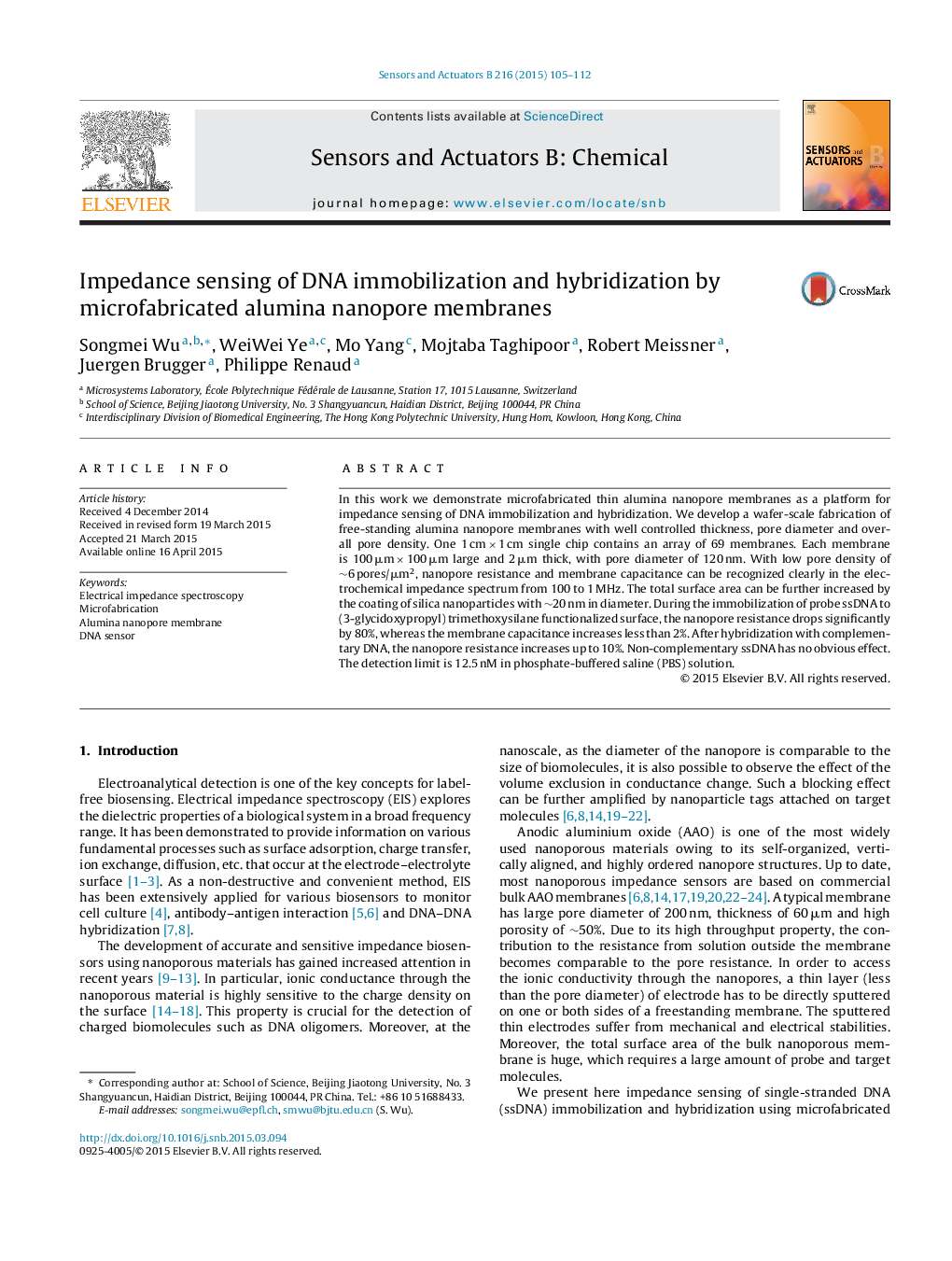| Article ID | Journal | Published Year | Pages | File Type |
|---|---|---|---|---|
| 750567 | Sensors and Actuators B: Chemical | 2015 | 8 Pages |
In this work we demonstrate microfabricated thin alumina nanopore membranes as a platform for impedance sensing of DNA immobilization and hybridization. We develop a wafer-scale fabrication of free-standing alumina nanopore membranes with well controlled thickness, pore diameter and overall pore density. One 1 cm × 1 cm single chip contains an array of 69 membranes. Each membrane is 100 μm × 100 μm large and 2 μm thick, with pore diameter of 120 nm. With low pore density of ∼6 pores/μm2, nanopore resistance and membrane capacitance can be recognized clearly in the electrochemical impedance spectrum from 100 to 1 MHz. The total surface area can be further increased by the coating of silica nanoparticles with ∼20 nm in diameter. During the immobilization of probe ssDNA to (3-glycidoxypropyl) trimethoxysilane functionalized surface, the nanopore resistance drops significantly by 80%, whereas the membrane capacitance increases less than 2%. After hybridization with complementary DNA, the nanopore resistance increases up to 10%. Non-complementary ssDNA has no obvious effect. The detection limit is 12.5 nM in phosphate-buffered saline (PBS) solution.
